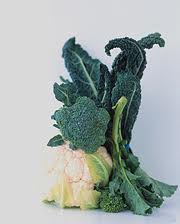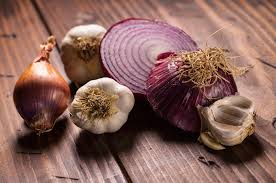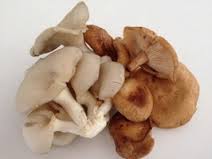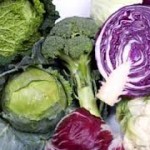Sulfur rich vegitables
Why You Should Eat Sulfur-Rich Vegetables
“Be sure to eat your sulfur.”Few people even know much about sulfur besides the whole rotten egg, fire and brimstone thing. It’s a mineral with a role in our physiology, but it doesn’t showboat like the obscenely corporeal calcium, forming bones and teeth that you can literally feel and see. It won’t immediately soothe your restless muscles or put you right to sleep, like magnesium. Unlike zinc, it doesn’t figure prominently in the production of a sexy hormone like testosterone. And though you can take iodine and get an instant reaction from your thyroid, taking sulfur doesn’t produce anything tangible. In short, sulfur lurks in the background and keeps a low profile.
So why does Terry Wahls promote the consumption of three cups of sulfur-rich vegetables every day?
Before we get to that, let’s define what we’re discussing here. What exactly qualifies as a sulfur-rich vegetable? Any and all fibrous non-leafy (although some have leaves, they’re never the culinary focus) usually-green vegetables that steam well and emit a distinctive, offensive-to-some odor probably contain considerable amounts of sulfur and can be called “sulfur-rich”:
- Brassicas – cabbage, broccoli, cauliflower, Brussels sprouts, bok choy, and related vegetables.
- Alliums – onions, shallots, garlic, leeks.
- Lots of edible stalks, lovely smells if you cook it wrong, and a tendency to go well with lemon butter. That sort of thing.
Well, by weight, sulfur is one of the most abundant mineral elements in the human body, coming in at around 140 grams for the average person. And as any regular reader of this blog should know, you don’t get to be an abundant mineral in human physiology by accident. Nope: sulfur is involved in hundreds of physiological processes. Let’s explore some of the big ones:
Sulfur is required for the synthesis of glutathione, one of our premier endogenous antioxidants. I’ve talked a bit about glutathione before. It’s one of the good ones.
Sulfur, in the form of disulfide bonds, provides strength and resiliency to hair, feathers, and feathered hair.
Sulfur is required for taurine synthesis. Taurine is essential for proper functioning of the cardiovascular system, our muscles, and the central nervous system.
Sulfur binds the two chains of amino acids that form insulin. It may seem like we bag on insulin a lot, but it’s absolutely necessary for life.
Sulfur is found in methionine, an essential amino acid (think meat, eggs, cheese), and in cysteine, a “non-essential” amino acid (think pork, poultry, eggs, milk).
But wait a minute. If sulfur can be found in all the animal foods we’re already eating – beef, chicken, eggs, pork, dairy – what’s the point of eating all those sulfur-rich vegetables?
There are two reasons, I think, for focusing on “sulfur-rich” vegetables. First, it’s helpful to group things. We’ve got the leafy greens, we’ve got the brightly colored produce (more on this next week), and we’ve got the sulfurs. We want to eat things from all three categories, and making the latter a separate group ensures that we won’t “overdose” on spinach. It’s just a neat, slick way to get the pro-vegetable message across and increase variety of intake. Second, and most importantly, sulfur-rich vegetation tends to come with extremely potent organosulfur compounds that offer a lot of benefit to those who eat them. Animal sources may contain plenty of sulfur-rich amino acids, which we undoubtedly require, but they don’t contain the organosulfur compounds.
Let’s explore them and go over a few of their potential benefits.
Alliums and Their Allyl Sulfur Compounds
Garlic, onions, shallots, and leeks all contain various organosulfur compounds, some of which show major potential.Garlic-derived organosulfur compounds have shown promise as anti-cancer operatives in in vitro studies.
Various garlic sulfides protected mice from peroxidative damage and increased glutathione activity in the liver. The garlic sulfides were delivered via corn oil, but I would recommend garlic butter if you’re looking for a fatty vessel.
When cooking meat, using an onion and garlic-based marinade reduced the formation of heterocyclic amines (a carcinogenic compound).
Onion-derived sulfur compounds improved the glucose tolerance of diabetic rats (but garlic-derived compounds did not).
Brassicas and Their Various Organosulfur Compounds
Sulforaphane, an organosulfur compound found in broccoli (especially the sprouts), cabbage, brussel sprouts, and cauliflower, inhibited mitochondrial permeability and reduced oxidative stress by increasing glutathione activity in rats.In inhabitants of a Chinese farming community, where airborne pollution is high and liver cancer incidence is elevated, drinking a sulforaphane-rich broccoli sprout drink was also able to increase the urinary excretion of those airborne pollutants.
Broccoli sprouts reduced oxidative stress in type 2 diabetics, as shown in a double blind placebo-controlled trial.
Organosulfur compounds from all kinds of brassicas have the potential to reduce or counteract the carcinogens derived from high-heat cooking.
Eating brassicas along with a carcinogen salad prevented the absorption of said carcinogens.
How to Prepare These Vegetables (and Preserve Their Compounds)
You can’t just go eat a head of cabbage like an apple, or throw together a lovely salad of raw onion, raw garlic, and raw broccoli stalks. I mean, you could, but it’d be pretty unpleasant. No, you want to cook these vegetables, because they taste better and are likely more nutritious that way. But you also don’t want to miss out on all the delightful organosulfur compounds we’ve been discussing. You want the optimal prep method – or close to it.Onions and Garlic
If it’s beneficial allyl sulfur compounds you want to consume, eating your alliums raw and sliced is the ticket. Heat breaks down the compounds. The only problem is that those same allyl sulfur compounds that might fight cancer, boost antioxidant status, and ward off liver damage are the very things that make raw onion and garlic so pungent and unpalatable. Some people enjoy the stuff raw – not me, besides a little chopped garlic in my salad dressings and some raw onion on a salad – but most prefer them cooked. Luckily, studies suggest that by slicing your alliums and letting them sit for at least ten minutes before cooking, you allow the myrosinase enzyme to release more allyl sulfur compounds and make them more resistant to heat.
Broccoli
Steaming is the way to go. One study found that lightly steaming broccoli rendered the sulforaphane three times more bioavailable than after heavily cooking it. I like to steam my broccoli until it’s bright green and tender enough to pierce the stalk with a fork with an emphatic push. Soggy, dull green broccoli is the worst – and it’s not nearly as beneficial. One group of scientists corroborate my method, saying that three to four minutes of light steaming – until “tough-tender” – is ideal.
Cabbage
Again, research confirms that lightly steamed cabbage offers more bioavailable organosulfur compounds than cabbage cooked at high heat in the microwave. Chop it up to your desired consistency. Let sit for a few minutes so the myrosinase gets to work. Stick to four or five minutes of steaming. Then, toss with your fat of choice. If you want to microwave, use the low or medium setting.
Cauliflower
Cut into small florets, let sit for ten minutes (to let the myrosinase enzyme do its work and make the glucosinates more available), and steam or bake. I’m a big fan of baked cauliflower tossed with turmeric, curry powder, cayenne, salt, and olive oil.
Brussels Sprouts
Although I’m sure the “best” way to cook sprouts (like all the other brassicas) is to quarter and steam them for five minutes, I can’t help but think you’re missing out on the perfect opportunity for some prime caramelization in the oven. So yeah, I’ll steam Brussels sprouts and toss with butter or olive oil and enjoy them just fine, but every once in awhile I’ll finish those suckers off in the oven on high.
Everything Else
Slicing, sitting, and steaming is always a safe bet.
For all these foods, try to embrace the bitterness. Love the bite, because that bite and that bitterness means you’re getting those interesting compounds. Enjoy the crispness of lightly cooked brassicas from time to time. It may take some getting used to, and you might have to play with different flavor combinations so that the bitterness will work, but you’ll be pleasantly surprised. Avoid the mush.
As I mentioned in the greens post, three cups a day are probably unnecessary. Just try a bunch from the ones I’ve listed, see what you like, and try to get some sort of sulfur-rich vegetable into your mouth at least a few times a week. Or, go all out and give the three cups a day routine a shot. You might really like it and thrive on it.
What’s your favorite sulfur-rich vegetable? How do you eat it? Let me know in the comment section!
 What so Great About Sulfur-Rich Vegetables?
What so Great About Sulfur-Rich Vegetables?
You hear so much in the media about eating antioxidants but not so much about the importance of getting plenty of sulfur. In The Wahls Protocol, Dr Wahls recommends eating 3 cups of sulfur rich vegetables each day for vibrant health.What is so great about sulfur?
First of all sulfur is one of the most abundant minerals in the human body. It is responsible for hundreds of physiological processes.
Sulfur is important for these processes in your body:
Sulfur-rich foods nourish the mitochondria. Mitochondria are often referred to as the powerhouses of the cells. They generate the energy that our cells need to do their jobs well.Sulfur synthesizes glutathione, which is a potent intercellular antioxidant. Glutathione neutralizes free radicals and helps the liver process toxins. It also plays a role in DNA synthesis. Sulfur-rich vegetables therefore help your body to be more efficient in eliminating toxins.
Sulfur is important for producing collagen, which make up all your connective tissues. To keep your joints fluid and pain free you need sulfur. Many arthritis sufferers take a supplement called (MSM) (methylsofonylmethane) to help with joint pain, but I prefer to get my sulfur from food even before I have any joint pain.
Sulfur helps give you strong, beautiful skin, hair and nails. We all want that, right?
Sulfur rich vegetables help prevent the narrowing of blood vessels, preventing atherosclerosis. They keep your blood vessels free from any blockages which is especially important for draining toxins out of the brain. Sulfur rich vegetables help keep the blood flowing freely in our system bringing nutrients to every cell.
Which foods contain sulfur?
Sulfur is found in beef, chicken, fish and diary. Eggs are high in sulfur as you can sometimes tell from their smell.Even if you eat the foods mentioned above it is still important to get sulfur from vegetables. There are two reasons; the first is the vegetables are highly alkaline. Animal proteins are acidic. You want to eat lots of vegetables to keep your pH in balance particularly if you eat animal products. I recommend 70% of your plate be full of vegetables.
Second, and most importantly, sulfur-rich vegetables have potent organosulfur compounds that have benefits not available from the animal sources. The animal foods contain plenty of the sulfur-rich amino acids, but they don’t contain the organosulfur compounds.
Sulfur rich vegetables fall into 3 categories:
 The Cabbage Family
The Cabbage Family
These are often referred to as cruciferous or brassica vegetables.
They include vegetables like kale, broccoli, cauliflower, Brussels
sprouts, cabbage, radishes, and turnips. You can read about how they
help reduce belly fat in my blog post.The cabbage family of vegetables contain many organic sulfur compounds known as glucosinolates which the research has shown to support detoxification, reduce oxidative stress and protect brains cells. These vegetables also contain potent antioxidants which help reduce the risk of heart disease and cancer.
Cruciferous vegetables are good when raw and cooked are combined. Some of the compounds in these vegetables are released when raw and others need to be heated to be bioavailable. Myrosinase, an enzyme that is released when the cell walls are broken (by chewing, chopping, blending or juicing) triggers the bodies own antioxidant system. The best ones to eat raw are kale, spinach and cabbage. Cooking kills the myrosinase but some of their other nutrients are more bioavailable when cooked. The nutrients in broccoli and cauliflower more available cooked. So have a raw kale salad along with your stir fried broccoli to get the maximum benefits.
HEALTH NOTE: If you have any thyroid issues it is best to always cook your cruciferous vegetables. The cruciferous vegetables have a goitrogens which can interfere with normal thyroid functioning. Don’t worry, if you cook them for a few minutes you reduce their goiterogenic effect. Since I have a thyroid condition, I like to steam my kale for 2 minutes before I put it into my smoothie.
The Onion Family Also Knows as Alliums
These vegetables include both red and yellow onions, garlic, leeks,
scallions and shallots. They have been used in many cultures because of
their medicinal properties. Alliums reduce the risk for heart disease,
cancer and dementia. They contain antibacterial properties and greater
fluidity of the blood.The onion family of vegetables help fight against neurological diseases such as Alzheimer’s. They also enhance detoxification by reducing toxins.
To get the most health benefits from garlic and onions, let them sit for a minimum of 5 minutes, optimally 10 minutes, after cutting and before eating or cooking. Waiting 5-10 minutes allows the health-promoting alliicin to form. If you do not let it sit, alliicin is never formed, so it is worth the wait. By allowing your garlic and onions to sit for 5-10 minutes, you can cook it on low or medium heat without destroying the alliicin.
 The Mushroom Family
The Mushroom Family
Mushrooms have been used medicinally in Asia for thousands of years.
They are rich in sulfur, B vitamins, minerals and compounds not found
in other foods. Components of the cell walls of mushrooms contain
natural killer cells that support the body’s natural defenses by
balancing the immune system. Mushrooms protect against cancer and
auto-immune diseases.Mushrooms are best eaten cooked. Mushrooms have very tough cell walls which are hard to digest if you don’t cook them. Cooking them releases the nutrients they contain. Mushrooms also contain mild toxins which are destroyed when cooked.
HEALTH NOTE: Individuals with medical conditions such as ulcerative colitis may experience an increase in symptoms after eating foods high in sulfur because of an inability to breakdown the mineral correctly, according to Northwest Naturopathic Urology.If you have trouble digesting sulfur vegetables It is best to eat them cooked. Start adding them in gradually allowing your body to gently process them.
List of Sulfur-Rich Vegetables
- asparagus
- bean sprouts
- bok choy
- broccoli
- brussels sprouts
- cabbage
- cauliflower
- chives
- collard greens
- daikon
- garlic
- green beans
- horseradish
- jicama
- kale
- leeks
- mushrooms
- onions
- peas
- radishes and radish greens
- rutabaga
- sauerkraut (raw)
- scallions
- shallots
- spinach
- tempeh
- turnips and turnip greens


Comments
Post a Comment